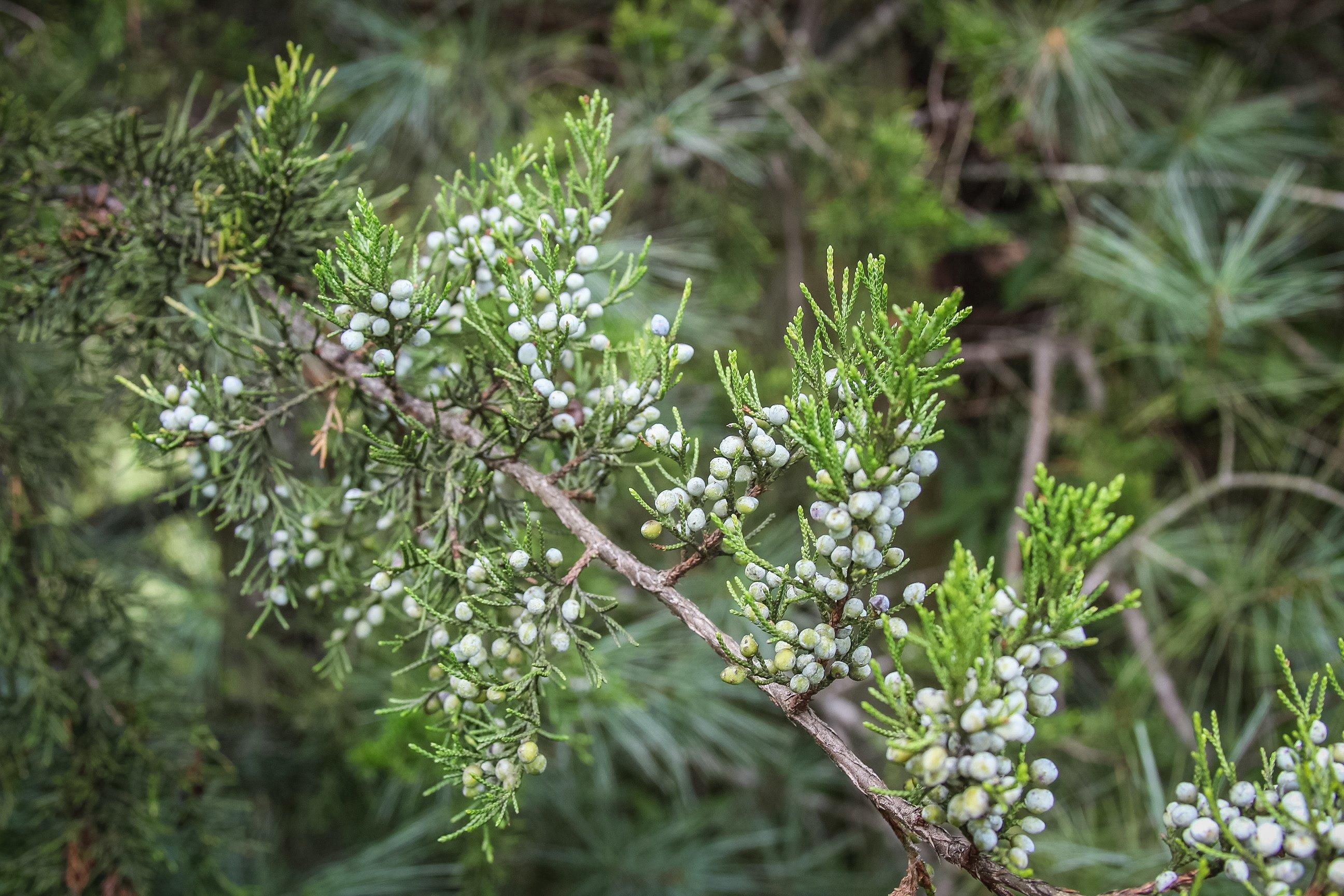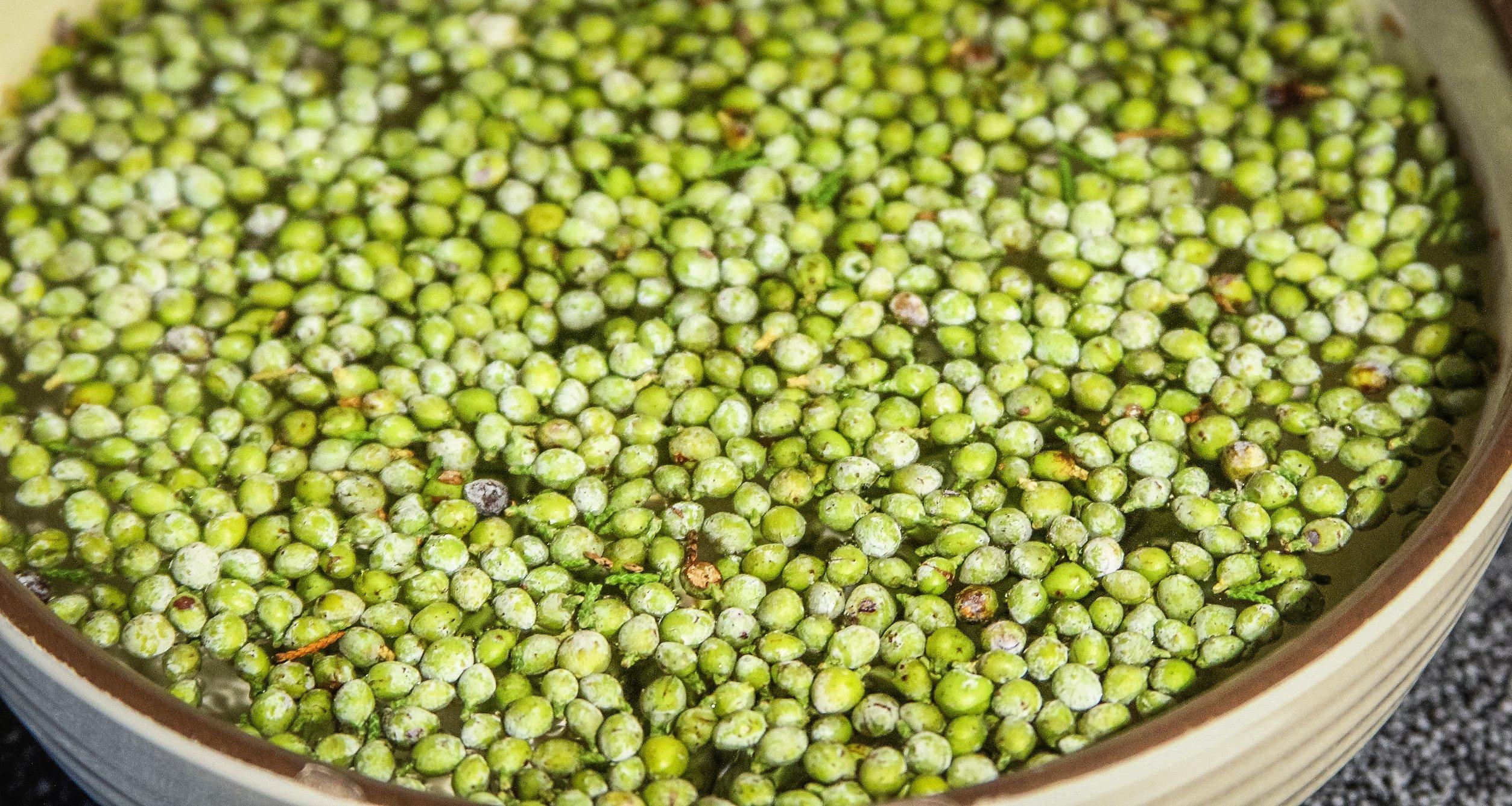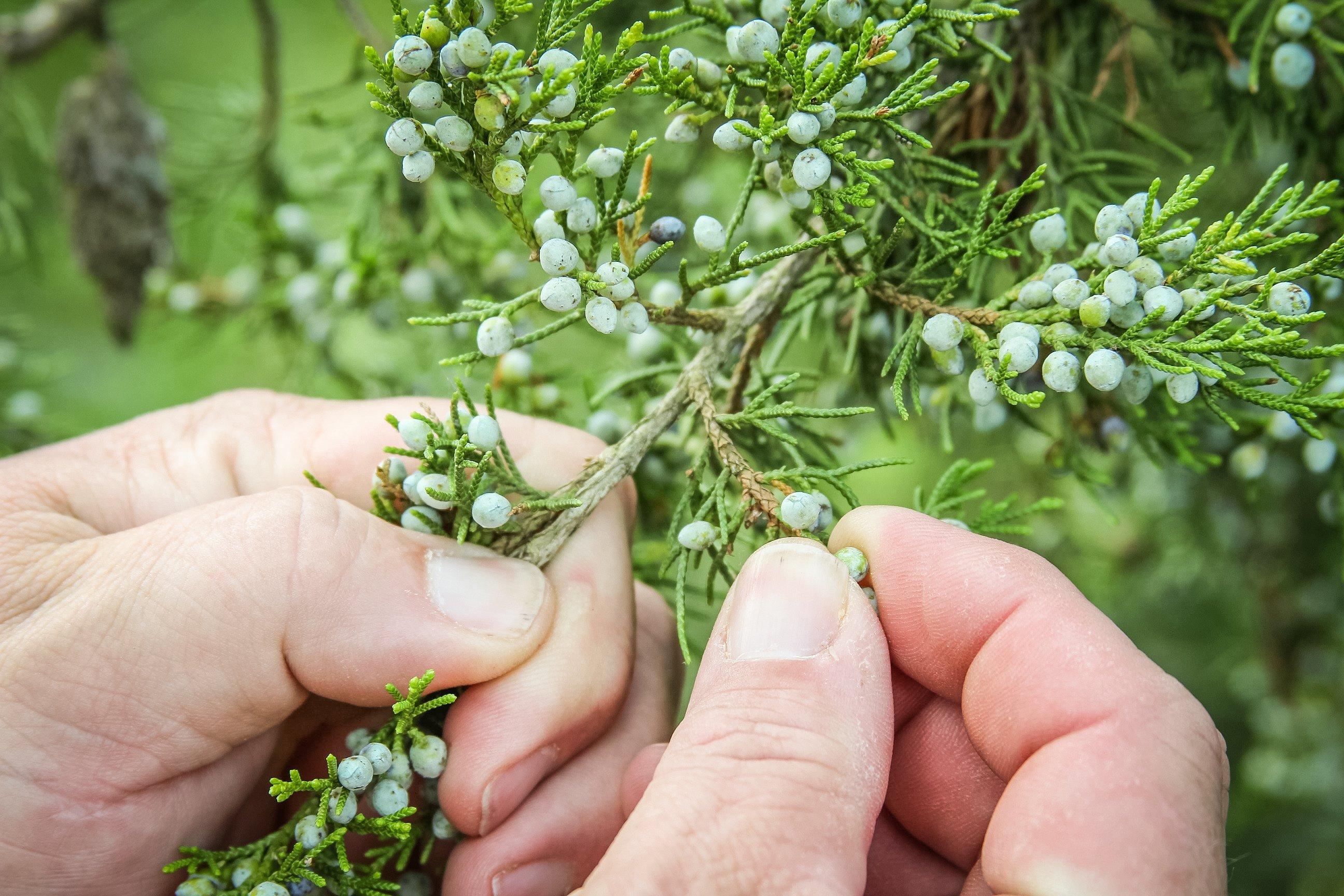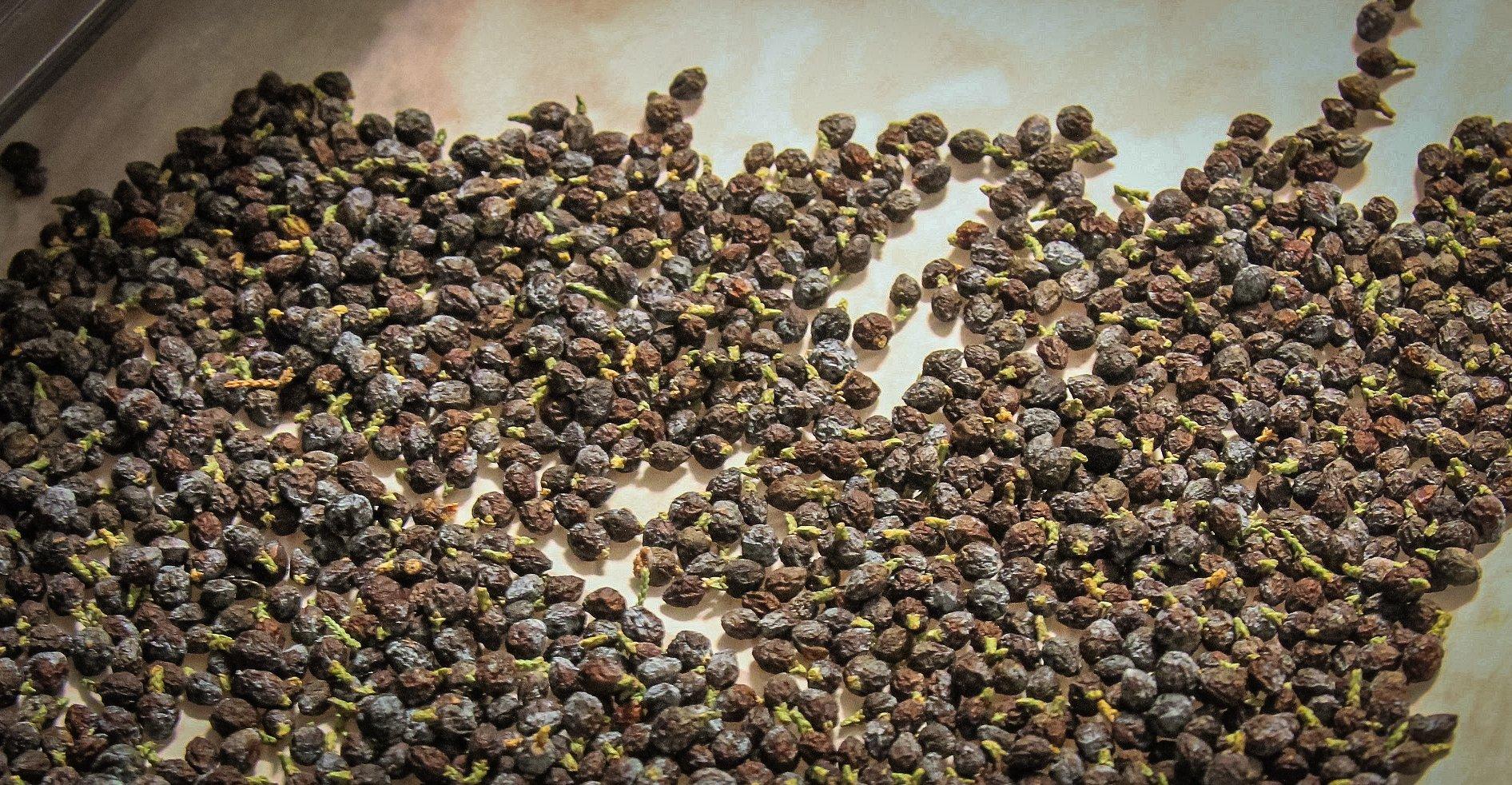Fall is the best time of year to harvest and dry juniper berries for your wild game kitchen.
Have you ever noticed juniper berries in a recipe and wondered what they tasted like? Or maybe you searched for them at your local spice shop and got a mild shock when you saw the price? If you live in an area with Eastern Red Cedars (Juniperus virginiana), or one of the other 12 native junipers in the United States (most everyone), then you can collect your own. And they taste even better than the juniper berries you will find in a store.

Juniper berries aren't really berries at all, but are tiny cones with scales so small and packed so tightly that its hard to see them with the naked eye. The berries grow over a three-year cycle, going from very small, to slightly larger green, to light blue and then dark blue when fully mature. In any given area, different trees will be at different stages from year to year, so there should be a few around with ripe berries each fall. Pick the berries by hand, trying to get as few of the cedar needles as possible. Rinse the berries under clean water to wash away any small insects that might be hanging on.

The berries can be eaten dried, fresh, chopped or powdered to impart a sharp, peppery flavor to balance the richness of game meats, soups and stews. Leave the berries whole until ready for use, the grind or pound and sprinkle on as seasoning.
Eastern red cedar berries and other non-toxic junipers have been used in a number of ways. Native Americans often added juniper berries to food dishes and grains like flour for a hint of flavor. They often cooked venison and other meat with Juniper berries as a spice. They were prepared different ways by different tribes but some of the preparation methods include drying, soaking, mashing or just eating them raw. Juniper berries and young twigs were also made into a medicinal tea by Native American Tribes.
Here in Kentucky, we start picking the berries in early fall, when they first start to take on a bluish tint. We continue to pick as the berries darken as winter approaches. The green berries have a fresh, almost citrus flavor. As they mature, the flavor gets sharper and takes on more of a peppery note.

You can use the berries fresh or dry them for long-term storage. Fresh or dried, the flavor is always strongest just after the berries have been crushed. Because of that, I leave them whole until right before use, crushing only the amount I need in a mortar and pestle.

You can allow the berries to dry on their own or speed the process by placing them in a dehydrator overnight. I place a sheet of parchment paper on the dehydrator rack to keep the berries from falling through the openings. Store your dried juniper berries in an airtight container out of direct sunlight.
Use your dried berries to directly season meats, or as a flavoring for sauces and marinades.
It is worth noting that overconsumption of eastern red cedar berries can be mildly toxic, but one would have to consume massive quantities to be at risk. It is also advised that pregnant women avoid juniper berries.
As with all foraged wild food, be certain of plant species. While all native species of juniper are safe to harvest from, some imported species can be toxic. If you aren't sure, check with an experienced forager or biologist in your area.











































